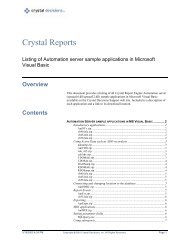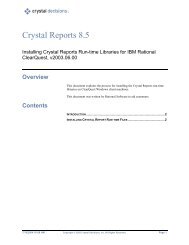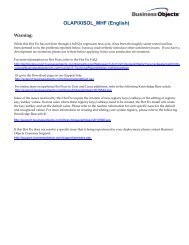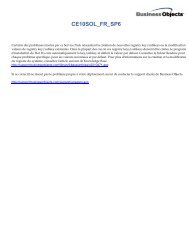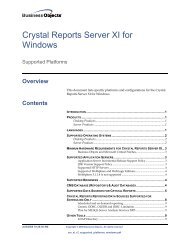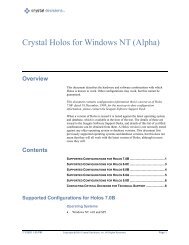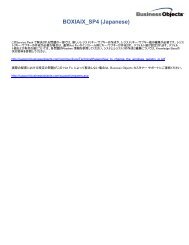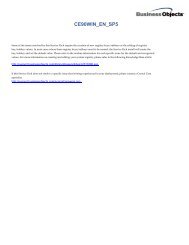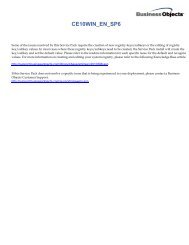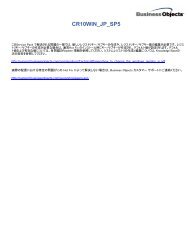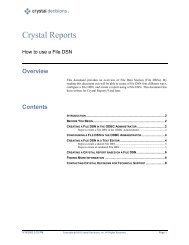Crystal Reports™ 8.5 Developer's Guide
Crystal Reports™ 8.5 Developer's Guide
Crystal Reports™ 8.5 Developer's Guide
You also want an ePaper? Increase the reach of your titles
YUMPU automatically turns print PDFs into web optimized ePapers that Google loves.
The Report Designer Component<br />
The Report Designer Component<br />
Design time<br />
Runtime<br />
The Report Designer Component (RDC) is a powerful solution for Visual Basic<br />
developers who quickly and easily integrate reporting into their database<br />
applications. It’s an ActiveX designer object that packs the reporting power of<br />
<strong>Crystal</strong> Reports into a lightweight add-in for Visual Basic 5.0 or 6.0. You can open,<br />
design and customize reports within the Visual Basic IDE. In addition:<br />
Intuitive Report Experts make it flexible and efficient to connect to data and<br />
<br />
integrate powerful reports into applications.<br />
With hundreds of report properties, methods and events, you have complete<br />
<br />
control over your report designs, using familiar Visual Basic code.<br />
Report distribution is simplified through a small component count and free<br />
<br />
runtime.<br />
Reports can be packaged within the applications' executable or stored outside<br />
<br />
the application in the traditional (.rpt) format.<br />
Note: Get the latest news about the Report Designer Component from the Seagate<br />
Software Developer Zone web site at<br />
http://www.seagatesoftware.com/products/dev_zone<br />
At design time, the Report Designer Component provides a user interface that<br />
closely integrates with the Visual Basic IDE. Through the user interface, you design<br />
and manipulate reports and report data. This interface includes events that can be<br />
directly programmed from within Visual Basic.<br />
The Report Designer Component uses the Active Data Driver for connecting to<br />
ISAM, ODBC, and SQL databases through Data Access Objects (DAO), Remote<br />
Data Objects (RDO), ActiveX Data Objects (ADO), and Data Environments (Visual<br />
Basic 6.0 only). You can design the data set from within Visual Basic, then apply it<br />
to the report contained by the Report Designer Component.<br />
When working in Visual Basic, you will often need to use the Report Viewer for<br />
ActiveX as a user interface to display reports. The Report Viewer is an ActiveX<br />
control that you can drop to a standard Visual Basic Form. The Report Viewer is<br />
where your report is displayed at runtime.<br />
The user interface provided by the Report Designer Component at design time<br />
does not appear in your application at runtime, or when it is compiled into an<br />
executable file. Instead, the Report Designer Component is accessed directly by<br />
your Visual Basic code. New for version <strong>8.5</strong> is the Embeddable <strong>Crystal</strong> Reports<br />
Designer Control. This allows you to provide your users with the ability to design<br />
or edit <strong>Crystal</strong> Reports within your application using the same interface as the<br />
16 <strong>Crystal</strong> Reports Developer’s <strong>Guide</strong>



